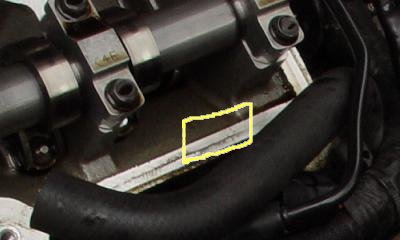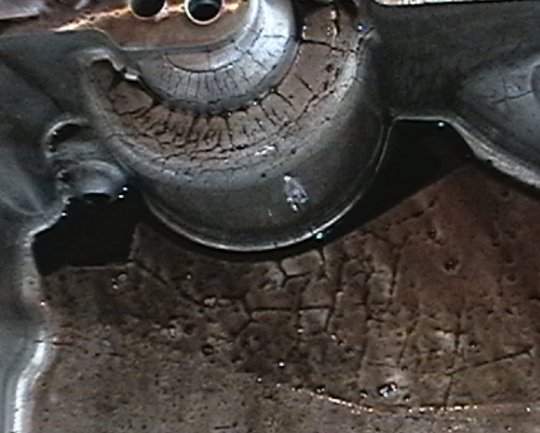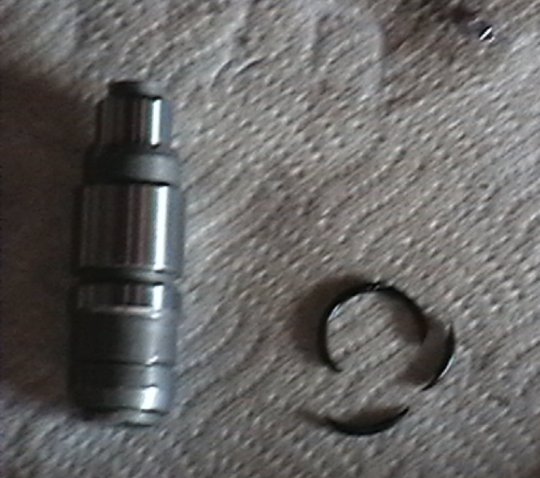|
Never Forget |
||||||||||||||||||
|
|
||||||||||||||||||
FAQ'sCloud Car Engine Problems Cloud Car Transmission Problems Cloud Car Performance Ignition Misc.Car InformationThe Society of Automotive Engineers Car EnthusiastsCar Parts Vendors |
Cloud Car Engine Problems
The below list represents a collection of engine problems that either commonly occur to the cloud cars, or are serious enough to warrant some sort of warning. TSBs are currently not covered; however, they will be in the future. Mitsubishi 2.5L V-6 - Oil Pressure Light Intermittently Comes On At Idle The problem is due to a failed oil pressure switch. Over time, the switch builds up dirt and sludge from engine oil, and will eventually gum up to the point where the switch will start to make contact even at idle conditions. The oil pressure switch must be replaced. The switch is located right above the oil filter, on the oil filter extension housing. I do not have the part number for this switch on hand, but will post it here when I do get it. It should cost around $30 for the switch, and possibly another $50 in labor to replace it. Mitsubishi 2.5L V-6 - Engine Fails to Turn Over When Attempting To Start It The problem is due to a bad starter motor relay. However, this relay will also partially short out the starter motor solenoid and will burn out the starter fuse in the power distribution center. The starter motor relay will tend to stick shut after being in service for many years. This will continuously provide power to the starter motor solenoid while the relay is stuck shut. The solenoid will overheat, and will begin to melt the insulation in its windings. This, in turn, will increase current to the solenoid, and will eventually cause the starter fuse to burn out. The starter, starter relay, and the fuse must be replaced. The part number for the starter is 4609058, and can be purchased for $201.60 at DodgeParts.com. The relay part number is 4638094, and can be purchased from DodgeParts.com for $6.88. The fuse is a standard ATM20 fuse rated at 20 A, and can be purchased at any major auto parts store or department store.
Chrysler 2.7L V-6 - Timing Chain Tensioner Failed/Loud Knocking Noises Heard The problem is due to shoddy workmanship; specifically, aluminum flash is not cleaned off machined aluminum engine surfaces before the engine is assembled. This flash will eventually break off of the aluminum engine components, and will travel all throughout the engine via the oil supply system. Severity of engine problems due to this manufacturing defect depend on oil change schedules and oil filter change schedules. Severity could run from a severe knocking at certain engine RPMs, to jumped valve timing, to a complete and catastrophic engine seizure. Aluminum flash will eventually break off of the aluminum engine parts. I've seen flash as coming from the cylinder heads, but the engine block is also suspect as it is also made out of aluminum. There is a good chance that the flash will come from the valve cover sealing surface, although it might also come from the machined oil galleries.
The flash will then travel down into the oil pan, where it will eventually get sucked into the oil pump via the oil pickup tube. There is a screen on the inlet of the oil pickup tube that will catch most particles; however, small particles will get through. Depending on how badly the screen is plugged, suction may force larger particles to go through the screen and into the oil pump.
The flash will then be pumped through the oil pump rotors. At this point, the flash may either work its way into the oil pressure relief valve, or may pass on through to the oil filter. If the flash gets into the oil pressure relief valve, it will cause that valve to jam partially shut, removing overpressure protection from the engine components. This, in turn, may cause the timing chain tensioner o-ring to blow out into the oilpan, and cause a large oil leak to form out of the clearance between the timing chain tensioner and its socket in the right-hand cylinder head. If the flash makes it to the oil filter, it may be stopped here. However, if the recommended "normal" oil change interval is followed according to the owner's manual, then it is very possible that enough flash will build up to cause the bypass in the oil filter to open. If this occurs, then the oil filter itself no longer provides protection, and aluminum flash will then go through the entire engine. If this occurs, the flash will make it into the tight machined tolerances in the valve lash adjusters in the cylinder heads, will cause the valve lash adjusters to jam, and will cause valve knock from valve lash adjuster failure. Flash will also get into the bearing surfaces for the camshafts, and cause gouging of these surfaces. The flash will also make it to all of the bearing surfaces, and will gouge the main bearings, connecting rod bearings, and cam bearing surfaces. This problem is suspected of causing connecting rod bearing failure.
If the timing chain tensioner loses its o-ring, there will now be a large hole formed by the clearance between the tensioner body and its socket in the right-hand cylinder head. This will cause an abnormal oil flow path, and will cause system oil pressure to drop below normal. At idle for a normal warmed up engine, oil pressure should be around 5 psig. With the failure described due to a blown out tensioner o-ring, oil pressure at idle for a warmed up engine could well be zero psig. This could be problematic in that the bearings within the engine will no longer be able to perform their intended job, and the engine will quickly destroy itself. If any of these symptoms occur, the only way to fix the problem is to replace or completely rebuild the engine. There is no way to guarantee that all of the aluminum flash in the engine would be removed without doing either of these actions. Therefore, there is no guarantee that simply changing the timing chain tensioner, oil pump, and valve lash adjusters, will fix the problem. A good preventive measure for peace of mind is to religiously change the oil every 3000 miles, and change the oil filter at these intervals. I highly recommend the use of fully synthetic oil, as it is more resistant to sludging due to overheating than normal oil is. Follow the "severe duty" schedule found in the owner's manual; do not rely on the "normal" schedule as very few cars actually qualify for this schedule. I would also recommend that an oil pressure gauge be installed. Do not rely on the oil pressure warning light, since if it lights up, it's too late to prevent engine seizure.
The problem is due to a leaking water pump gasket between the pump itself and the engine block. Engines manufactured prior to 2004 had gaskets that were prone to dissolving, which eventually caused coolant to drip into the oil pan, mix in with the engine oil at the pump, turn into a rich, creamy sludge, and get pumped throughout the engine. If you own a vehicle with one of these engines manufactured prior to 2004, I highly suggest you have the water pump changed out now with a new OEM pump with P/N 4892425AA ($44.46 at DodgeParts.com). Please note that Chrysler has redesigned this water pump so that it can better withstand the timing chain stresses associated with a running engine. This redesign also means that a new timing chain kit is required in order to properly install the new OEM water pump. The kit for SBEC engines is P/N 68036787AA for $208.80, and the kit for NGC engines is P/N 68036788AA for $170.40. If you have a 2004 model year car, check the physical appearance of your engine computer. If it has two large plugs coming out of it, use the SBEC kit. If the engine computer has 4 smaller connectors coming out of it, use the NGC kit. |
|||||||||||||||||
|
Chrysler, the Chrysler logo, Dodge, and Mopar are registered trademarks of Fiat Chrysler Automobiles. Other trademarks and logos are copyrighted by their various owners. This website copyright © 2000-2015 Thomas A. Vago. All Rights Reserved. |
This page last updated 20 April 2010. | |||||||||||||||||





